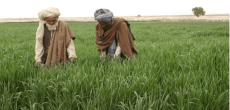[vc_row][vc_column][vc_column_text dp_text_size=”size-4″]The specific mechanism of the COVID-19 virus’s transfer to humans has not been proven, but a genetic relationship between the virus and a group of coronaviruses detected in horseshoe bats in Southeast Asia has been uncovered, according to sources.
Bat viruses can be transmitted to humans via an intermediary host or through direct contact with bat urine, faeces, blood, or saliva. Because environmental factors might make conditions more conducive to spillover occurrences, scientists stress the necessity of knowing these elements and identifying high-risk locations in order to limit the danger of future pandemics.
Previously, unaltered wildlife habitats served as natural buffers against pathogen transmission, posing little risk to human populations. Human activities, however, have turned these protected zones into high-risk areas encompassing approximately 9 million square kilometres across 113 countries. Nearly 1.8 billion people lived in high-risk zones in 2020, which can give companies and governments with useful information to handle spillover hazards proactively.
Also Read: You Can Now Install Interest-Free Solar Panel Systems at Your Home in Easy Monthly Installments.
Etien Koua, WHO’s epidemic intelligence manager for Africa, feels that finding hotspots and developing predictive models would be extremely beneficial to governments. Over 100 researchers studying bat habitats throughout the world spoke to Reuters on the importance of preserving these habitats.
Scientists contend that humans cannot afford to continue destroying wildlife habitats, and they urge governments around the world to adopt a formal procedure for analysing health risks before embarking on development projects that may damage sensitive habitats. Unfortunately, discussions among scientists, public health specialists, national governments, and international organisations move slowly.[/vc_column_text][/vc_column][/vc_row]











